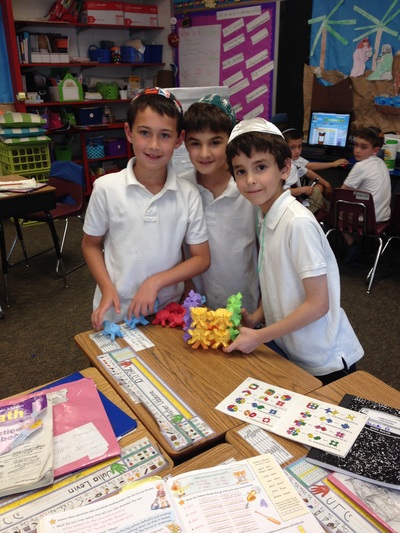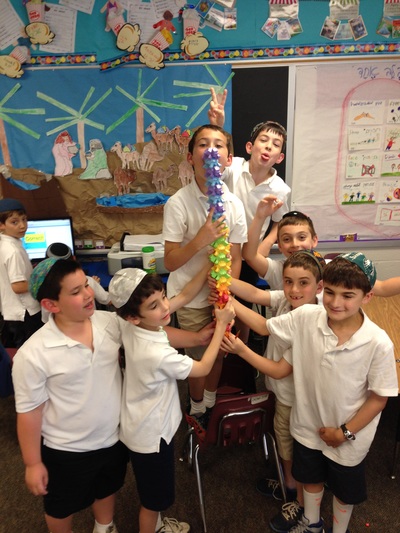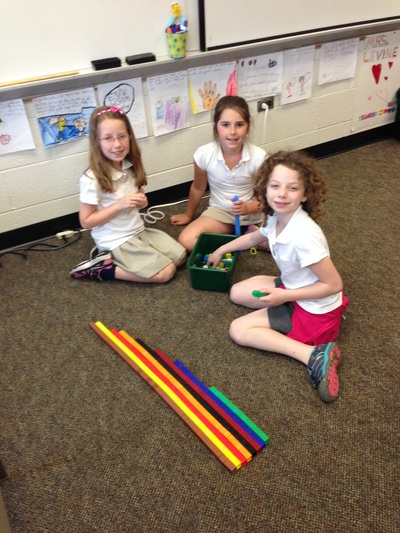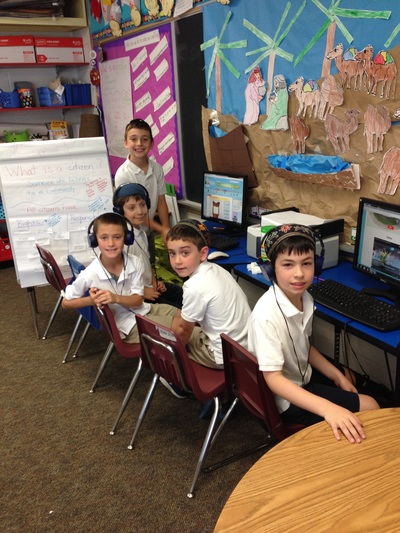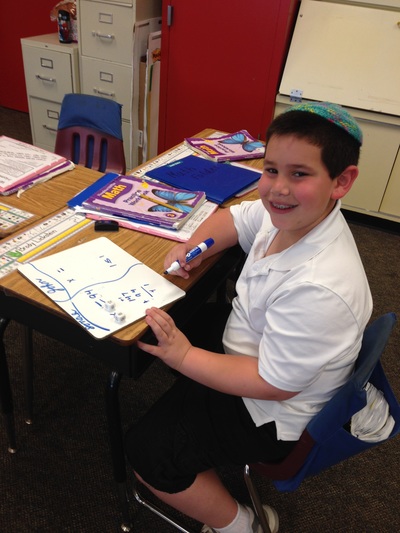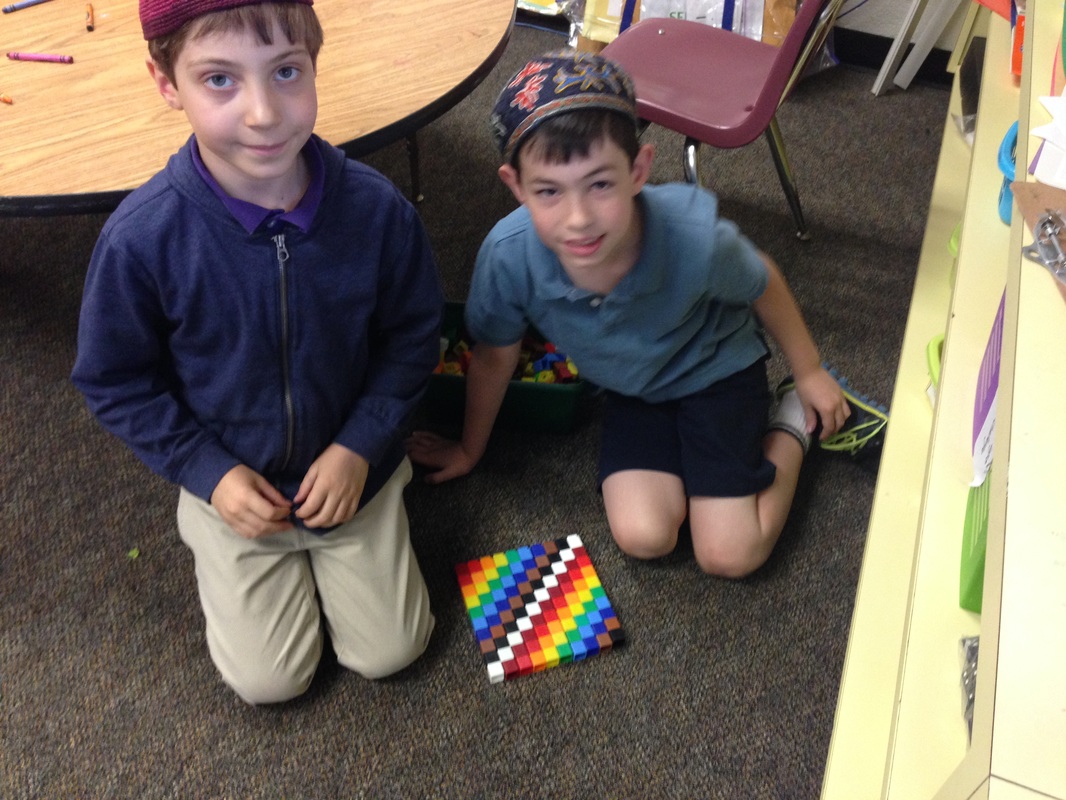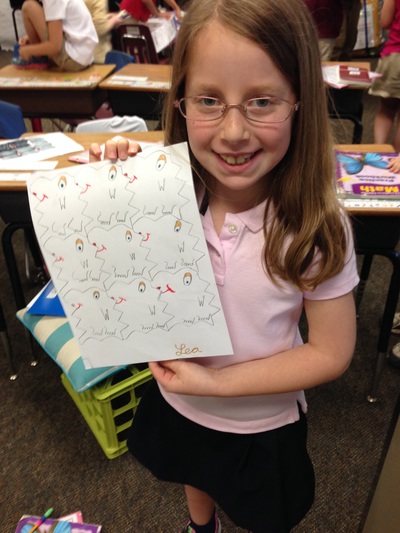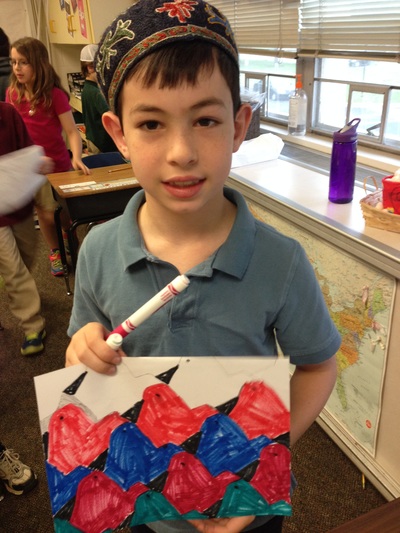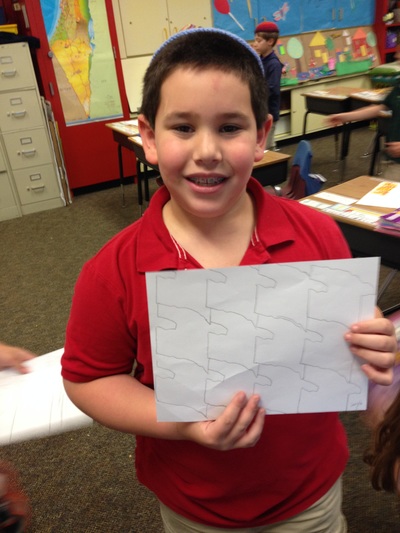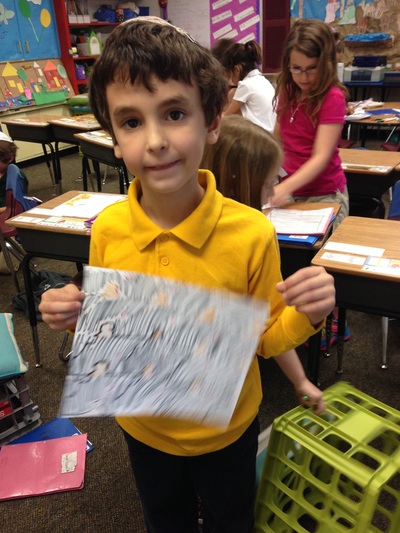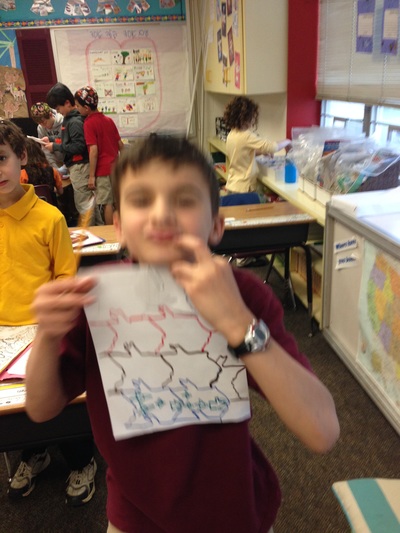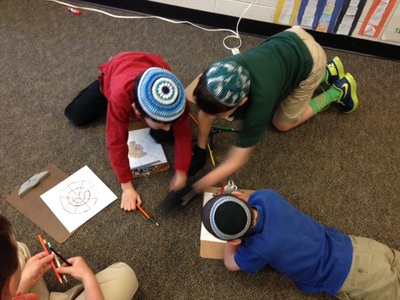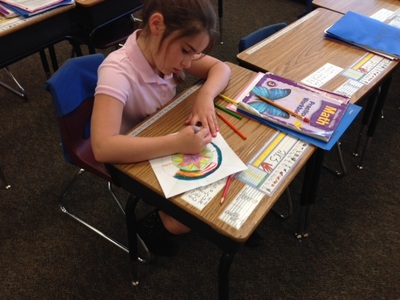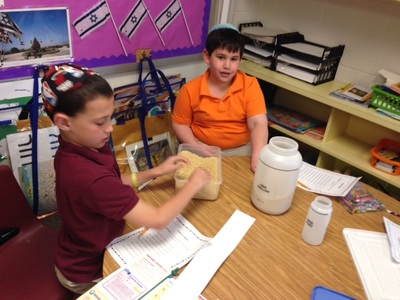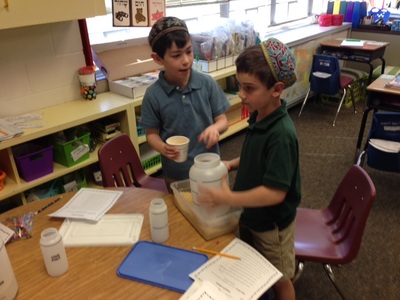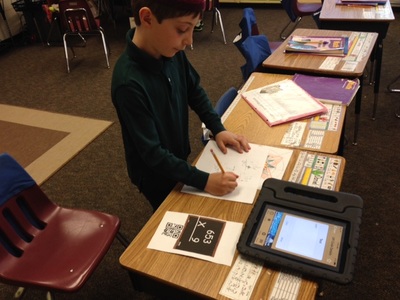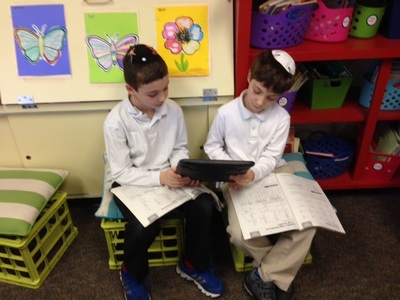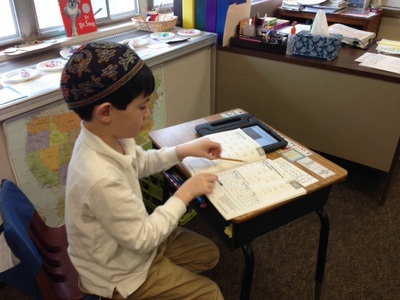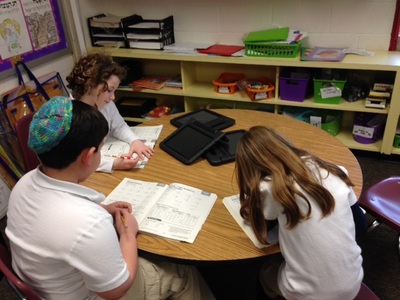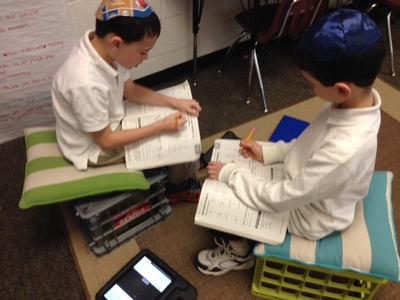Enjoy your summer, folks, and continue to look for the math moment in your everyday events!
|
I have had the most productive year in math teaching the most engaged group of students I have ever taught. Their love of math motivated me to provide the most challenging, engaging classroom I could. And I did. We loved the Math Workshop method and, after some tweaking, I found the right balance for my classroom and time restraints. I can only hope that my next group of students is as mathletic as this group was.
Enjoy your summer, folks, and continue to look for the math moment in your everyday events!
0 Comments
After we finished today's lessons, the students were allowed a math fun day. Here are some pictures of their activities.
1 and 2. Some of the boys playing with reptangles, turtle-shaped figures that can be combined into many geometric solid shapes. 3. The girls making a bar graph with color cubes. 4. Some of the boys playing math games together. 5. One boy playing Race to a Thousand, a riveting multipication game. Our class has reached an incredible point in their short careers as mathematicians; they have begun seeing math everywhere they go! Some students saw perpendicular lines when they crossed a busy intersection (and connected the geometric term intersection with the street-related noun of the same name). Others noticed that a pen is really a cylinder and our lockers are really rectangular prisms. One student saw a circular, mandala-like design in the blades of a ceiling fan. In class, we call these math moments and sharing them has become a daily occurrence during the first 5 minutes of our math classes. I am so proud of each student who finds a math moment in a regular everyday event. Please encourage your children to continue finding patterns and mathematical algorithms in their daily routines. This will strengthen their understanding and knowledge of math, as well as form stronger, positive ties to what we learn everyday.
Today we joined forces with Mrs. Bohn's math class to examine geometry in art. We studied the works of M.C. Escher and tessellations. Then we tried our hands at creating our own tiling designs. First we created the pattern and then traced it to create a repeating design on paper. As we were tracing, we all noticed that our pictures began to look like something familiar. Without realizing it, our students drew elephants, birds, butterflies, chicks, dinosaurs, and ladies with funny hats. MC Escher is an inspiring artist and we enjoyed having the opportunity to create art in his style.
Please excuse the blurry photos! To begin our study of geometry, we visited the playground to find geometric concepts. Then we took pictures of the playground and annotated the geometric concepts using Skitch. We searched for the following: 1. Lines Line segments Parallel lines Perpendicular lines Intersecting lines 2. Angles Right angles Acute angles Obtuse angles 3. Polygons (any closed shape) - Students had to identify four polygons Regular (all the sides are the same size) Irregular (the sides are different lengths) This project was harder than you think, but with a little creative thinking, we were all successful! As you know, we have been experimenting with units of liquid measurement and practicing making volume conversions. To facilitate this, we have created a visual representation of volume relationships in the form of Gallon Man. The students used PicCollage to create their robots, then transferred the pictures in Skitch, another app, to annotate them. Our classroom has been brimming with learning and activity this week. We have been discovering the difference between linear measurement and capacity. The students have been using customary and non-customary units to measure classroom objects and understand the relationship between inches, feet, yards, and miles. We have also been discovering the relationship between cups, pints, quarts, and gallons using rice (slightly less messy than water) and many differently-sized measuring containers.
We are exploring the relationship between math and art as we create mandalas, circular designs that incorporate measurement and geometric concepts. When the students have finished their daily assignments, they have been practicing multiplication using QR codes to check their answers. I am out of breath just sharing the amount of learning we have been doing this week! We will continue learning measurement for a few more days as we explore the metric system. We will also be continuing our flipped classroom as we reinforce our multiplication skills and begin long division. You can get a sneak peak of the flipped lessons on the Flipped Classroom page. Below are some pictures of today's activities - understanding capacity, working together to complete mandalas and practicing multiplication. What is the flipped classroom? It's a new method of teaching that many educators are swearing by. In this teaching model, the teacher provides the objectives and the learning tools and the students work together to learn the process. The group meets at the end of the lesson to discuss the process and the teacher teaches, reviews, corrects or guides the students as they correct their mistakes. This method also allows teachers to create and facilitate project-based learning opportunities as less classroom time is spent on traditional teaching of material.
The traditional flipped classroom students learn the concepts for homework and complete activities in class. This method is recommended for middle school and older. For our young students, I have modified the traditional to allow for the learning to happen in school. I have slowly been introducing this method to the students using posters, handouts, and pages I created in this blog. See the new category called Math Flipped Classroom for more information on some of the lessons. While the students are working on their flipped lessons, I am able to call them in small groups or alone to help them understand more difficult concepts. What I find is that the children are engaged in their classwork, more successful working with partners, and are strengthening their deep level thinking skills. When we get together in group, they are more easily able to explain their own thinking and how they discovered the process. They are also more able to self-correct since they own the process; it has not been taught to them. You can read more about the flipped classroom here. 1. http://cft.vanderbilt.edu/guides-sub-pages/flipping-the-classroom/ 2. http://www.edutopia.org/blog/flipped-classroom-in-class-version-jennifer-gonzalez Saturday, March 14 was National Pi Day. This year's Pi Day was especially significant as the date corresponded to the first five digits; an event that occurs only once in each millennium. We celebrated Pi Day today, March 16. We measured different circles to derive Pi ourselves. We got pretty close to 3.14 in our measurements! Then we examined the first 100 digit of Pi and created paper chains. Each color in the chain corresponds to a different digit. See highlights of our day below. |
